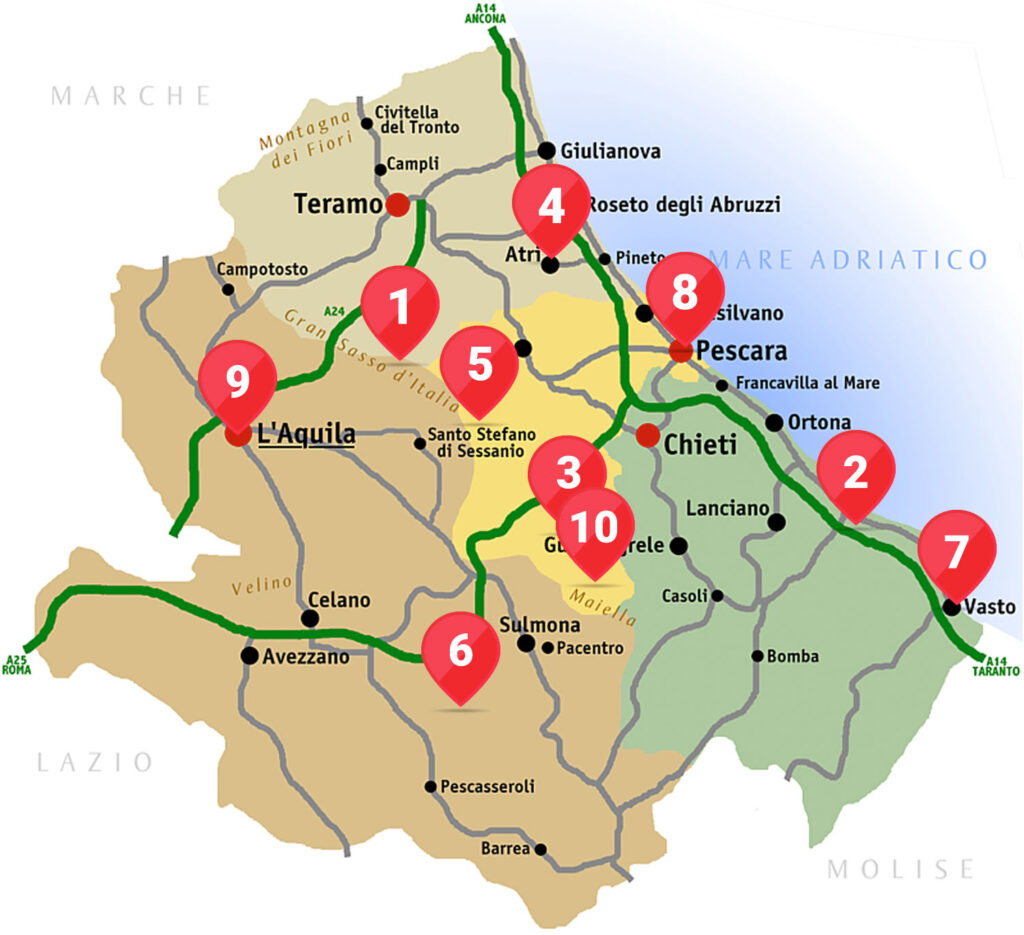10 PLACES TO VISIT TO FEEL REAL ABRUZZESE
ten places of the heart where the people of Abruzzo love to spend their free time.
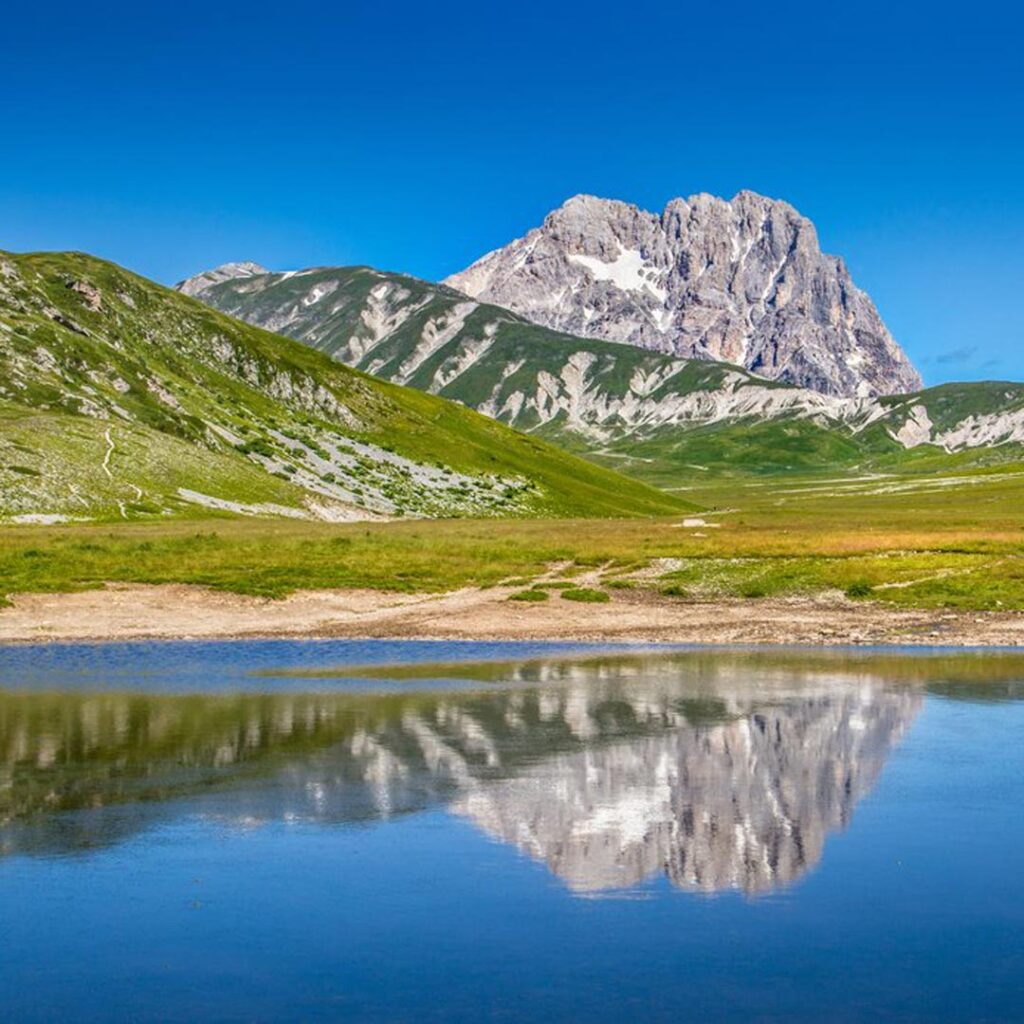
Campo Imperatore is one of the largest plateaus in Italy and is located in the province of L'Aquila, at 1800 meters above sea level. It is one of the most suggestive places in Abruzzo, which the well-known mountaineer Fosco Maraini called "Little Tibet". With its immense grasslands in a scenario that seems lunar, it has often been chosen in the past as a set of films and music videos. Characteristic of Campo Imperatore is the possibility to taste the typical products of the local tradition in the various refreshment points along the route; here you can really feel Abruzzo choosing the meat you can cook independently using the available barbecues. Above all, do not forget the famous arrosticini (li rusctill) accompanied by good Abruzzo wine. Fonte Vetica has always been an important stage in the memory of the Abruzzese: a monument and a commemorative plaque, the work of the famous Abruzzese sculptor Vicentino Michetti, was placed here. The plaque commemorates a tragedy dated 13 October 1919: that day a sudden snow storm outside season caused the death of a shepherd, Pupo Nunzio di Roio, his two young children and five thousand sheep from his flock.
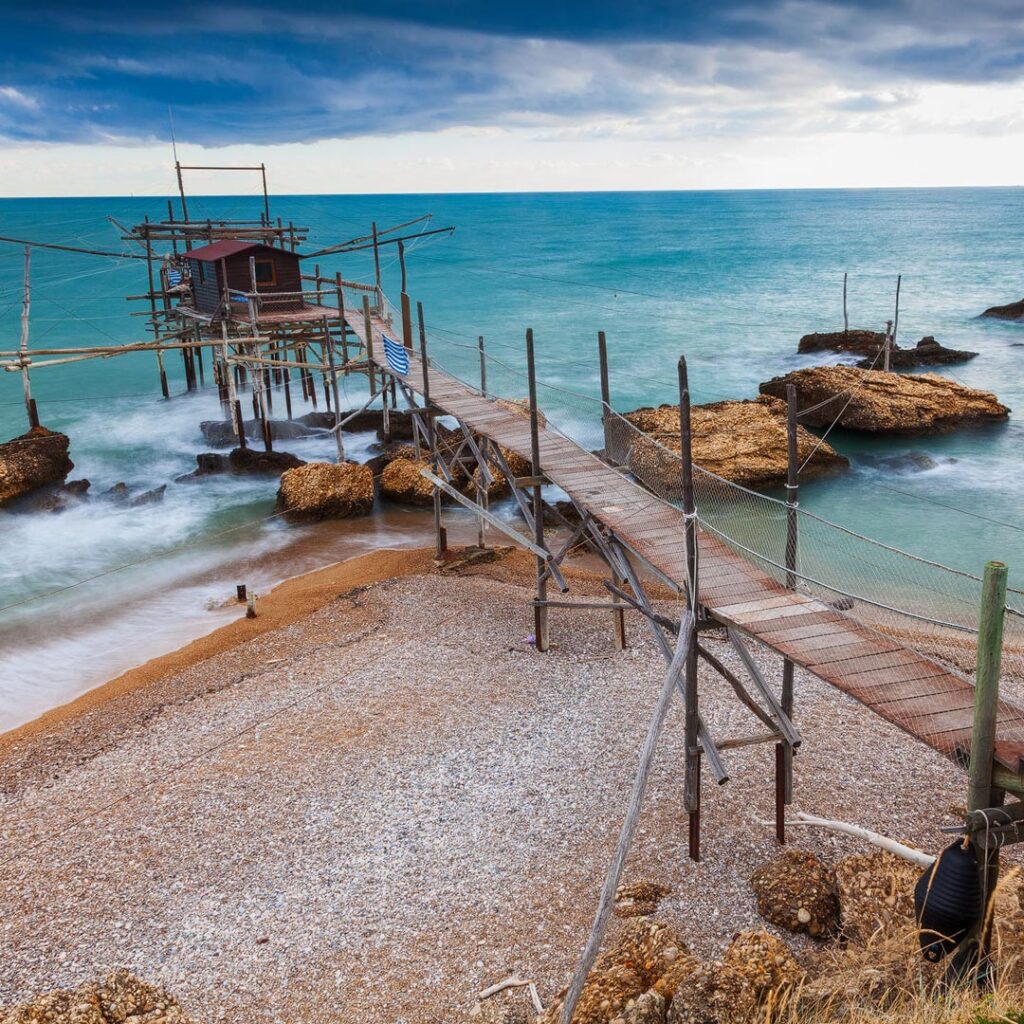
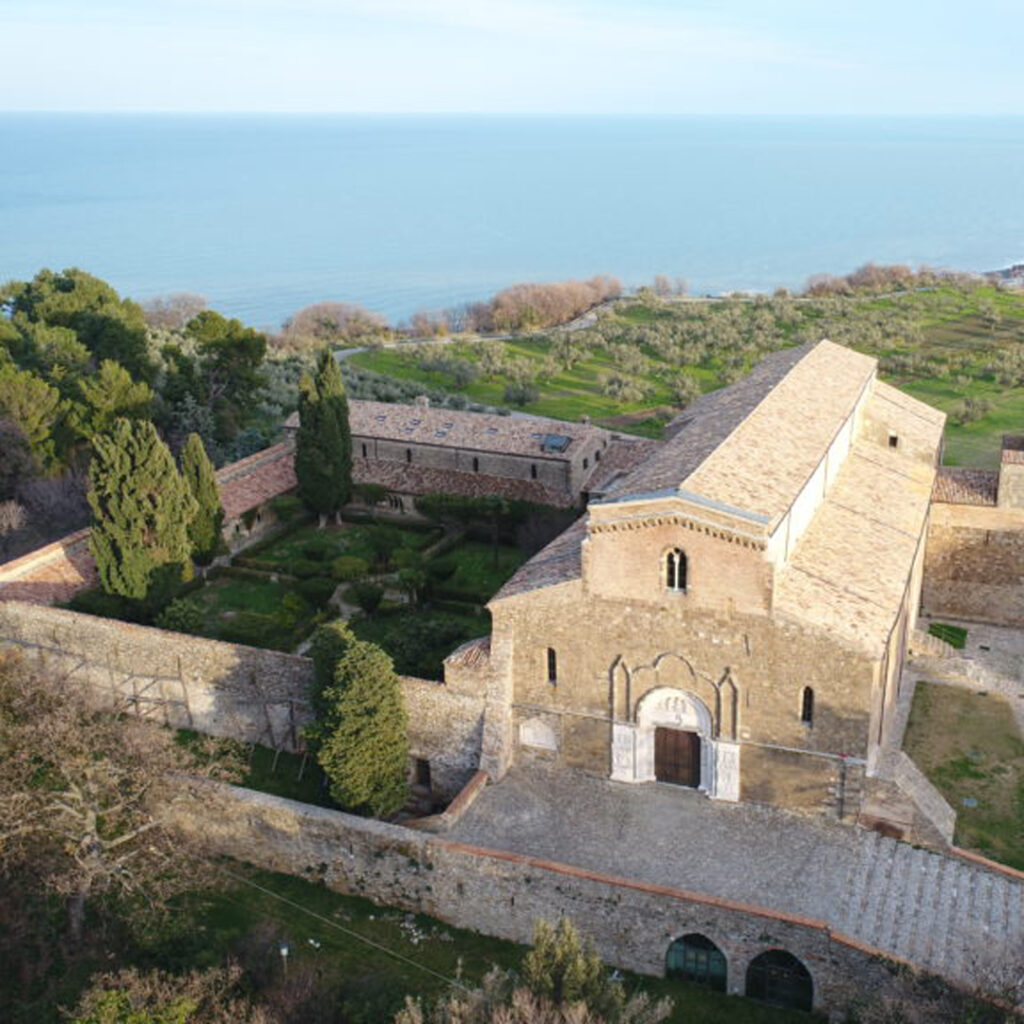
The Costa dei Trabocchi winds southward along the Adriatic Route No. 16 from Ortona to Vasto. It is characterized by the presence of the trabocco(lu travocche) and is full of beaches and small coves of which the same trabocchi seem to have been the custodians for centuries. The trabocchi are ancient wooden buildings on stilts and are used for fishing. Many can be visited, some are in the process of restoration, in others it is possible to eat fish in the unique enchantment of a dinner by the sea at night with a view of the illuminated coast. Thanks to the presence of a long cycle path, part of the “Green Adriatic Corridor”, the 42-km-coast can be covered by bike: along this route you will find seductive glimpses. There are several hypotheses about the origins of the trabocchi. In any case, it seems that their construction dates back to the eighth century. The first users of the trabocchi were farmers-shepherds: these men wanted to integrate their agricultural crops, so they built these stilts planted on the rocks, thus discovering the fishiness of their sea. Other hypotheses tell us of the existence of the trabocchi already in previous centuries ... As a matter of fact, mention of these fishing devices is to be found in the manuscript "Vita Sanctissimi Petri Celestini" (preserved at the Marciana Library in Venice) narrating the stay of Pietro da Morrone (the future Pope Celestino V) in the Monastery of San Giovanni in Venere from 1240 to 1243. This manuscript tells how Pietro looked out from the "Belvedere" hill and admired the sea "dotted with trabocchi". The panorama described by the manuscript is still unique today: it stands behind the apse of one of the most beautiful places in Abruzzo, the Abbey of San Giovanni in Venere and the perspective from the "Belvedere" gives a suspended picture on the sea. The abbey dates back to the seventh century and it was built over a temple of Venus that overlooked the promontory. It was enlarged in the 12th century and destroyed by the Turkish invasions in the 16th century. Today it represents one of the greatest examples of the simple Romanesque style. There are other views along the coast: the Dannunziano Hermitage, where Gabriele D’Annunzio wrote "The praise of death". The poet, looking out the window, described the Trabocco del Turchino below: "... he seemed to live a life of his own having an air and an effigy of animated body"; the lush vegetation of the Lecceta di Torino di Sangro and the enchanting sunrise show from the Marconi Belvedere in San Vito Chietino are also worth mentioning.
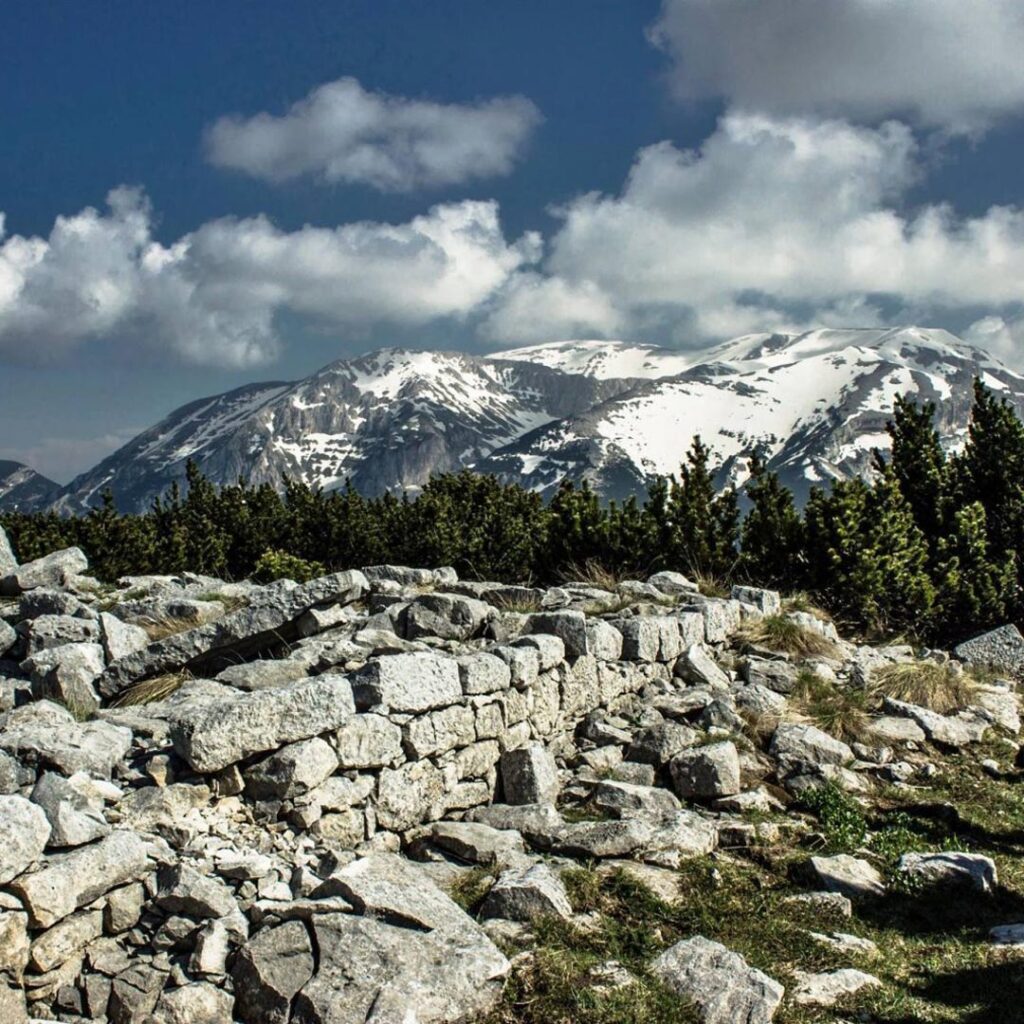
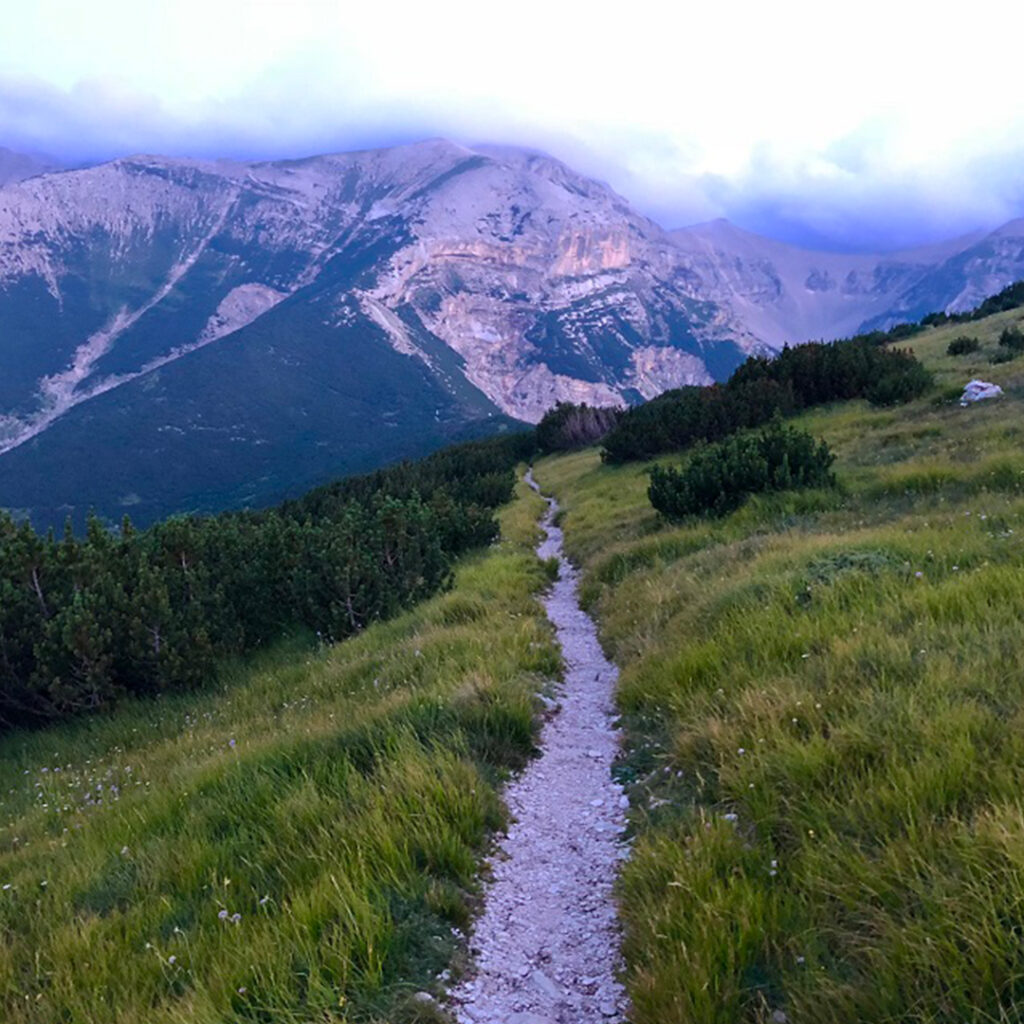
The Blockhaus (lu Bloccaus) is one of the classic destinations of the Abruzzese when they want to get away from everyday life and frenzy. This peak can be reached from the coast in about an hour and it is possible to look at the sea while staying on the summit at 2,145 m above sea level. The term Blockhaus is of German origin and means "rock house": it is one of the military forts to combat the phenomenon of brigandage after the unification of Italy. You can leave your car at the famous Pomilio Shelter and, after a walk along the Indro Montanelli route, get to the beginning of the path that leads to the Table of Brigands and, if you wish to continue, to Monte Amaro. The Blockhaus is a destination for many cycling enthusiasts, who reach the summit starting from the seaside resorts. Before or after the walk you can stop at the Pomilio Shelter for breakfast, lunch or a snack overlooking the sea. One of the most significant paths on the Majella starts from the Blockhaus: it leads to the area called Tavola dei Briganti (The Brigands’ Desk). Here you will find stone bases on which you can read the names and phrases engraved by the brigands who took refuge here in the period after the unification of Italy, when there was perhaps the first resistance struggle in the history of our region.
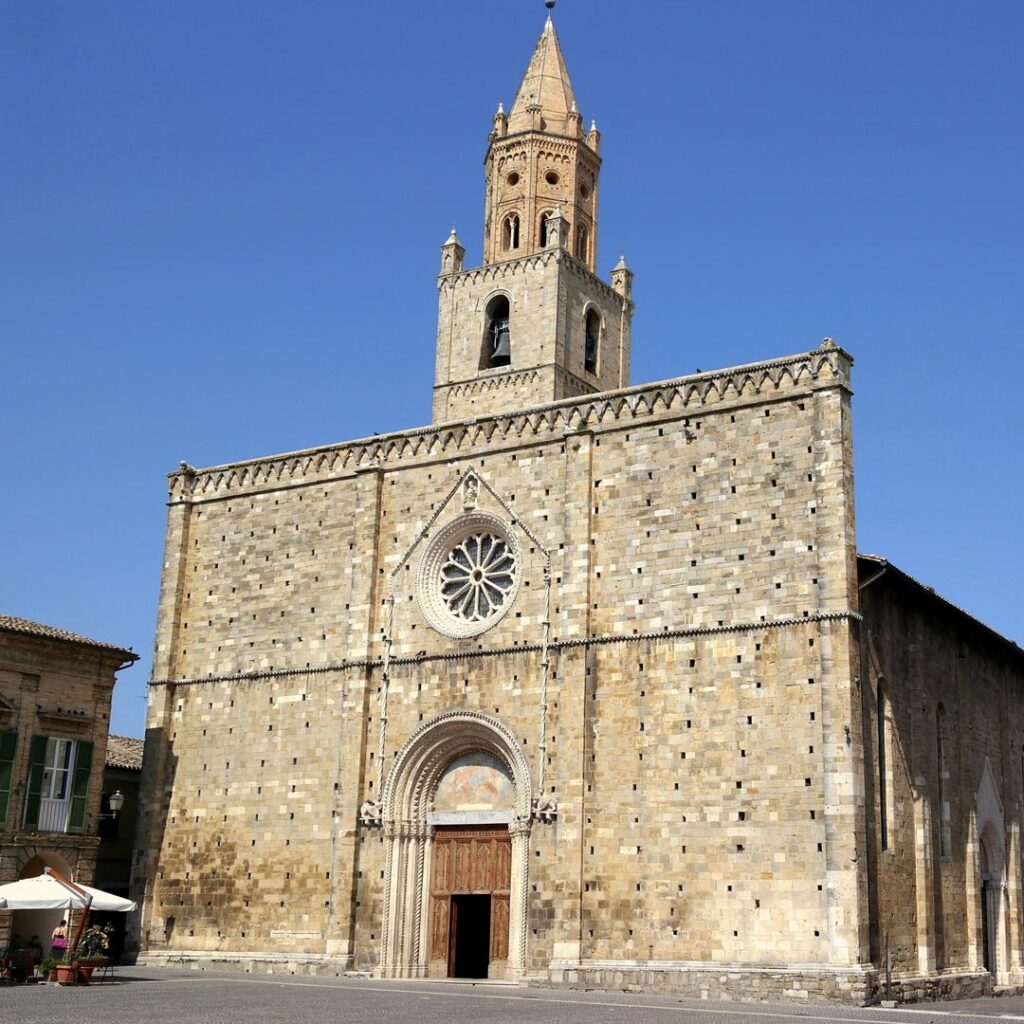
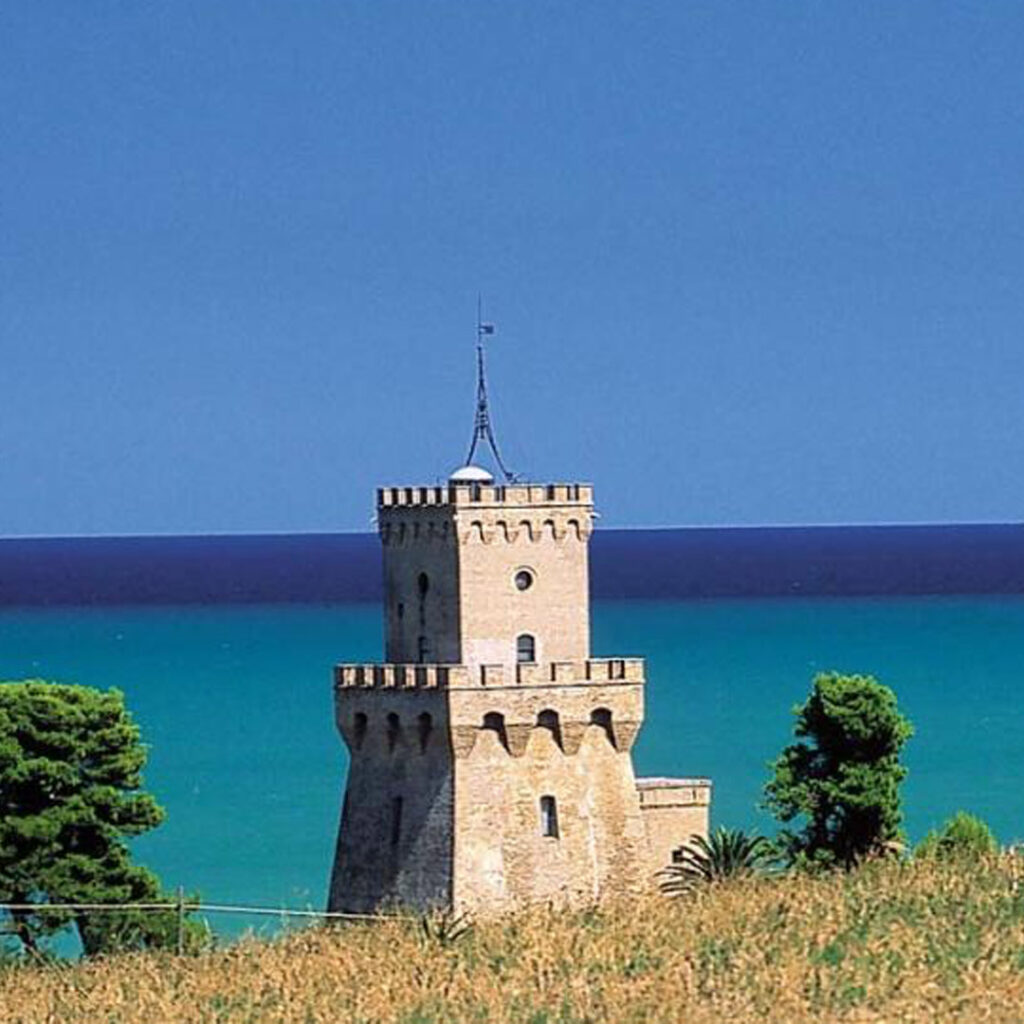
Atri is one of the most beautiful and oldest villages in Abruzzo. It is of pre-Roman origin, it stands on a hill 400 meters above sea level and within its walls this town houses monuments, art treasures, archaeological sites and museums. The many churches in the historic center are worth a visit. Among these, the Cathedral of the Assumption is one of the greatest examples of Abruzzo architecture, dating back to the thirteenth and fourteenth centuries. In addition, there are numerous stately palaces and monuments of historical interest: the Palazzo dei Duchi Acquaviva (built in the 14th century and currently the Town Hall), the medieval fortress of Capo d’Atri, the remains of the Roman Theater and the Municipal Theater. The road that descends from Atri to the coast shows only a small part of the beautiful hills of the province of Teramo, and will take you to the Cerrano beach. This is one of the most beautiful and wildest beaches of our region: it is characterized by a very long beach protected by a thick pine forest. This place is a perfect destination for great siestas and picnics for tourists and locals on the hottest summer days. The beach takes its name from the Torre di Cerrano: an ancient coastal tower of the Kingdom of Naples, which now houses the multimedia Library and Museum of the Sea. Remains of the ancient Roman port of Atri lie in the waters in front of the tower. The whole area is served by a cycle path that runs along the entire Abruzzo coast. In Cerrano it is also possible to find the Fratino bird, the symbol of the Abruzzo coast, which is also found in the south in some parts of the Costa dei Trabocchi.
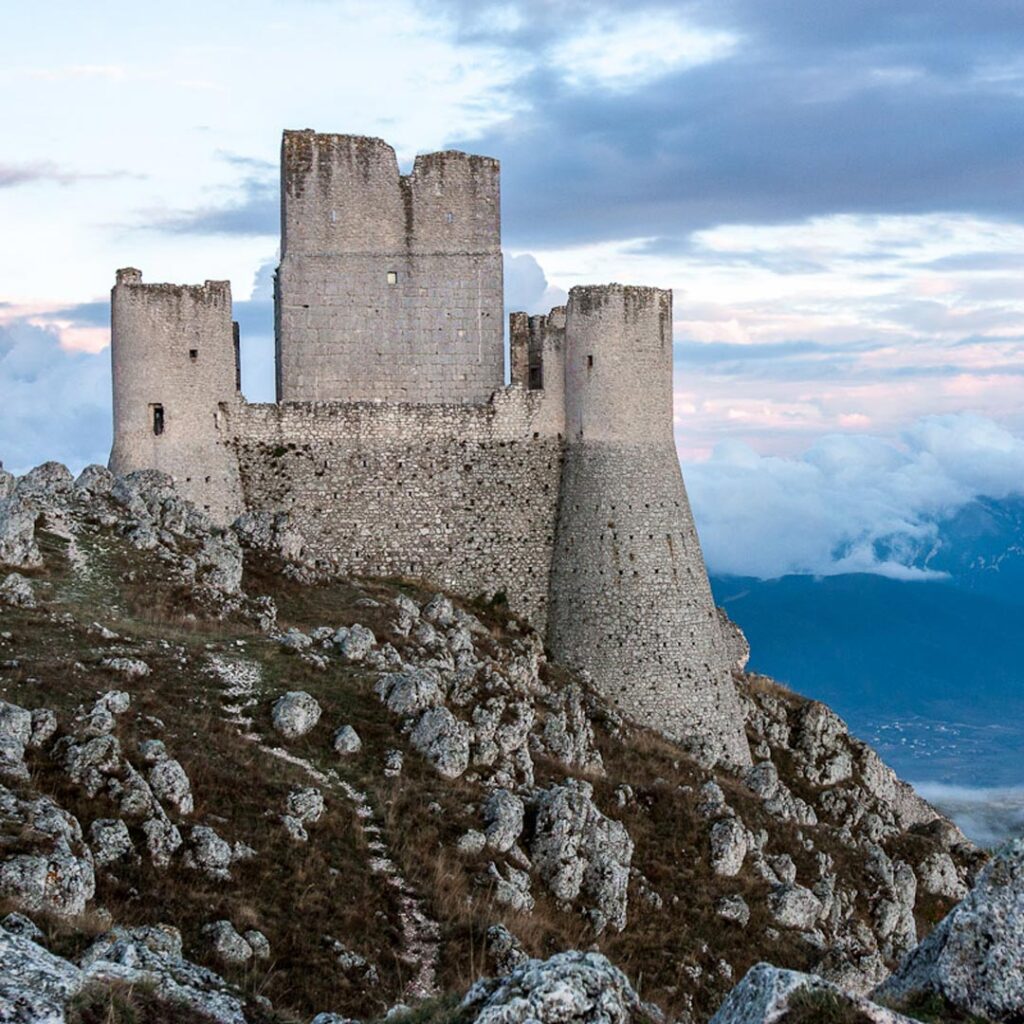
The Castle of Rocca Calascio (la rocche de Calasce) is one of the symbols and at the same time the pride of Abruzzo. It dominates the Piana di Navelli (Navelli Plains) and the Tirino Valley from above. Thanks to its strategic position, this castle was, in past centuries, a military control post. Subsequently, it functioned as a control point for pastures and flocks on the transumanza routes. The transumanza is the Italian term for transhumance, the traditional twice yearly migration of sheep and cows from the highlands to the lowlands, and back. The word literally means "crossing the land" National Geographic magazine has listed Rocca Calascio among the ten most beautiful castles in the world; it is also famous for being the filming location of the American film Ladyhawke (starring a very young Michelle Pfeiffer). In recent years, many visitors have had the suggestion of being able to meet the beautiful actress during their ascent that leads to the castle ... What really strikes in this place (as in many other places in Abruzzo) is the chance to perceive to what extent the coexistence between the human and natural elements has been difficult. In a territory that is as fascinating as (at least apparently) harsh and wild. These are also the characteristics that perhaps we find in the nature of the Abruzzese themselves.
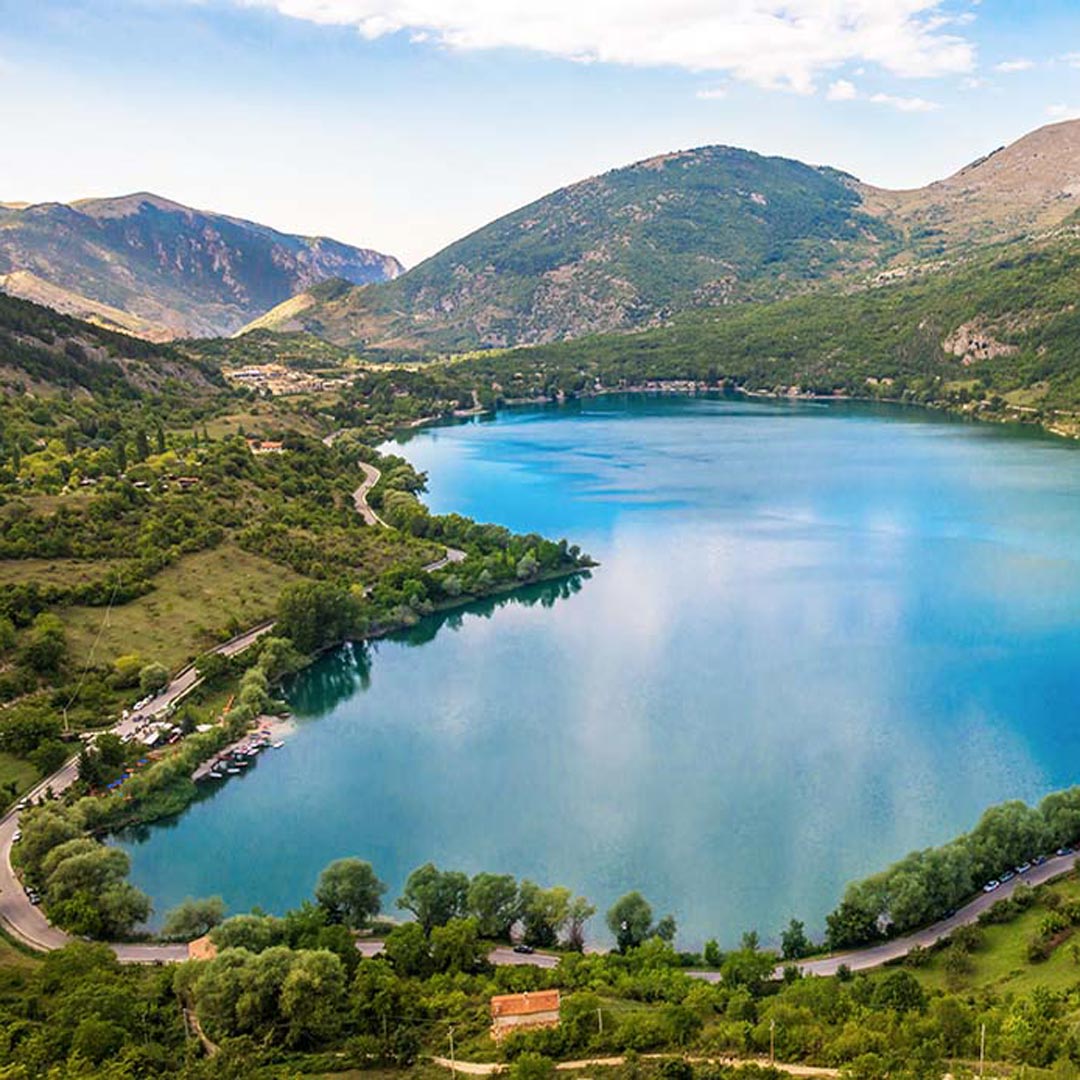
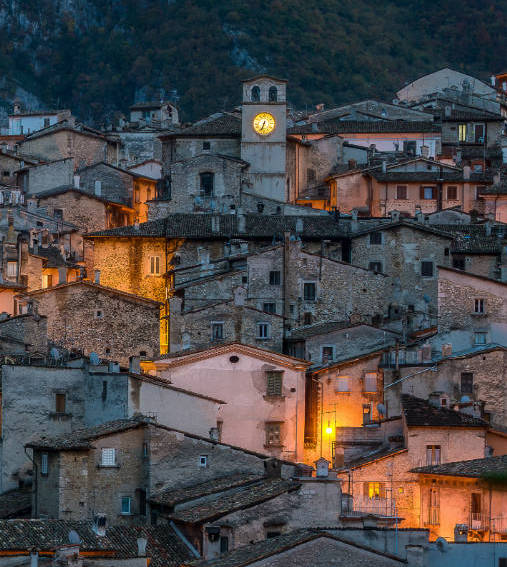
Scanno is one of the most suggestive villages in Abruzzo. Its stone houses, the wrought-iron-flowered balconies, the women with their long black skirts, the baskets on their head and the famous presentosa (the iconic jewel of this town) around their necks: these are the characteristics of a village that keeps intact the charm and atmosphere of the past. Known worldwide as the photographers' village, Scanno is present at the Moma museum in New York with the shot 'Scanno Boy' by the great Italian photographer Mario Giacomelli. The nature and traditions of this place have long been a destination for artists and visual art enthusiasts. Scanno offers so many interesting ideas and glimpses to be immortalized in all its beauty, in addition to Giacomelli, also by artists such as Hilde Lotz-Bauer, Henri Cartier-Bresson, Renzo Tortelli, Gianni Berengo Gardin and others. A street in the village is dedicated to these artists, and it is precisely the one which (the choice is yours) overlooks one of the most beautiful panoramas in the country. Scanno is part of the Sagittario Valley, the second oldest natural reserve in Italy, and is an ideal place for a visit with the whole family. Surrounded by greenery, it houses the heart-shaped lake that you can admire from above, along the Path of the Heart. On the way back you can take a ride on or around the lake, by renting pedal boats or rickshaws before having a typical Abruzzo picnic on the lawn.
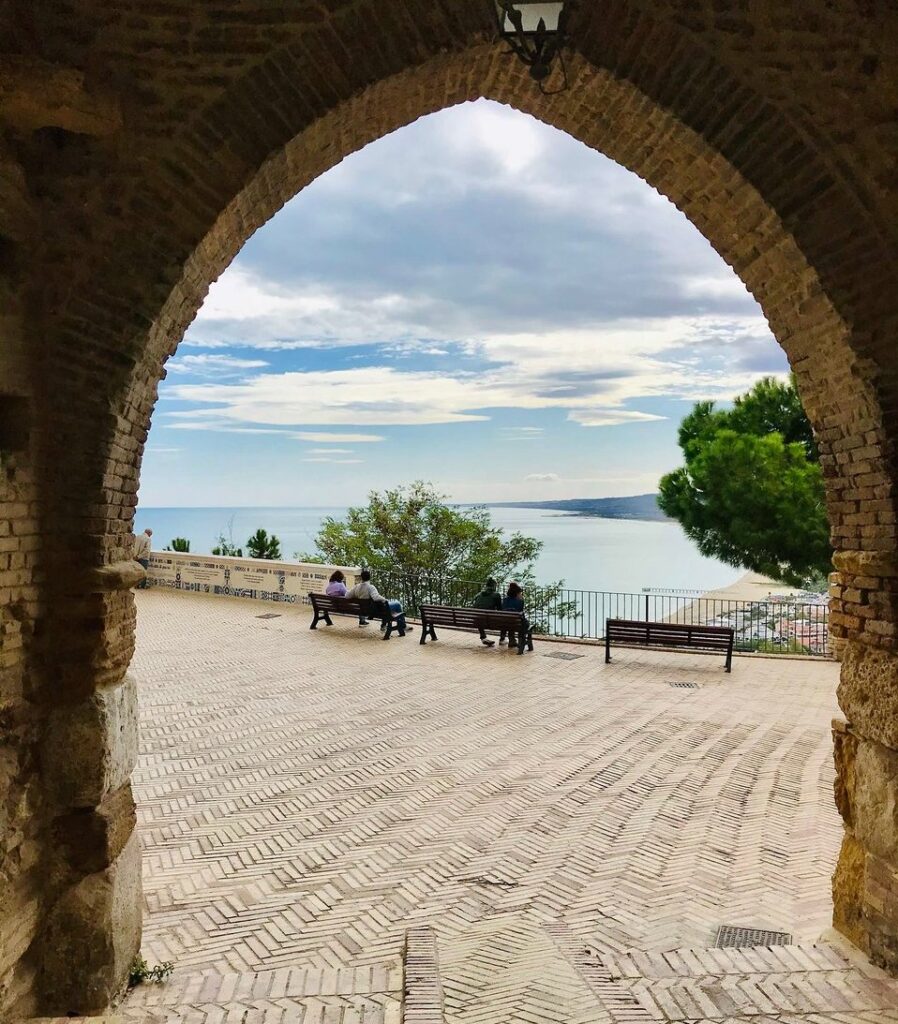
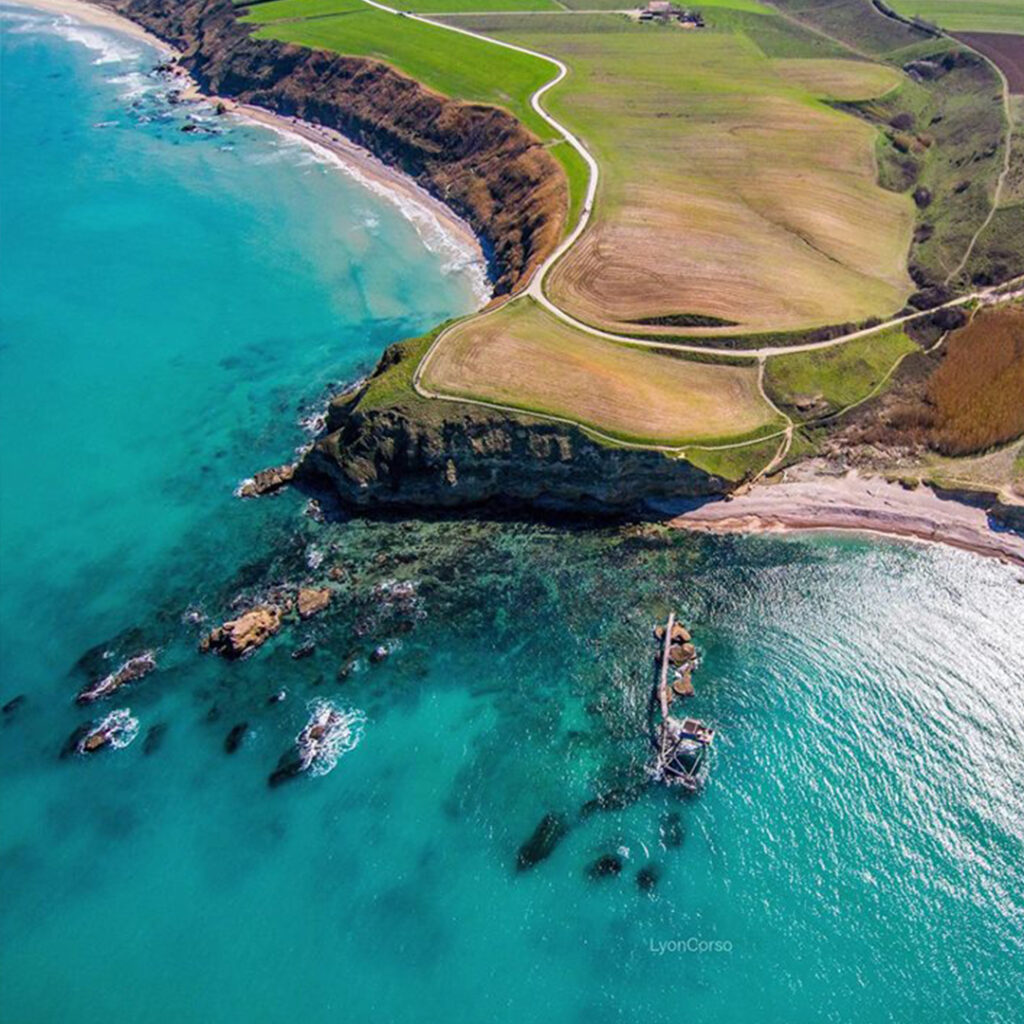
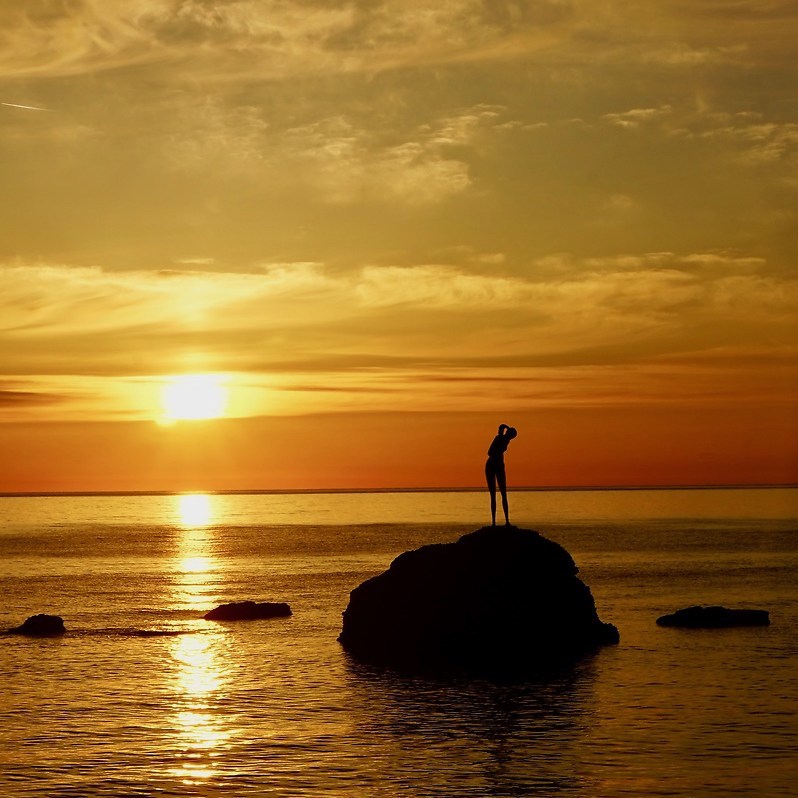
Vasto (lù Uàscte) is one of the most beautiful places in Abruzzo. Imagine flying on the wings of a seagull: it would take you from the alleys of the historic center of the ancient Histonium between art, culture and history, it would continue stopping then your gaze on the viewpoint of the Amblingh Promenade. Here you can admire the gulf and see in the distance a statue on a rock: it is 'La Bagnante' (woman who went down to the beach to bathe). The journey slowly ends descending to the sea, beaches and coves of the marina and the promontory of the Punta Aderci Natural Reserve. Casarsa, San Nicola, Torricella and then still inside the reserve the beach of Mottagrossa, finally the Libertini beach: these places are paradises that like few other places in Abruzzo can give you a great sense of freedom. They often have difficult access: the inhabitants of Vasto try to defend pristine nature with pride and passion! And if you are a smoker, don't give up on cigarette butts! Use the 'beach ashtray' distributed by the Reserve: you too will contribute to the protection of these places and you too can feel a little more Abruzzo. A little curiosity about the city of Vasto: like few other cities in the world, for example Cairo, it’s got a male name.
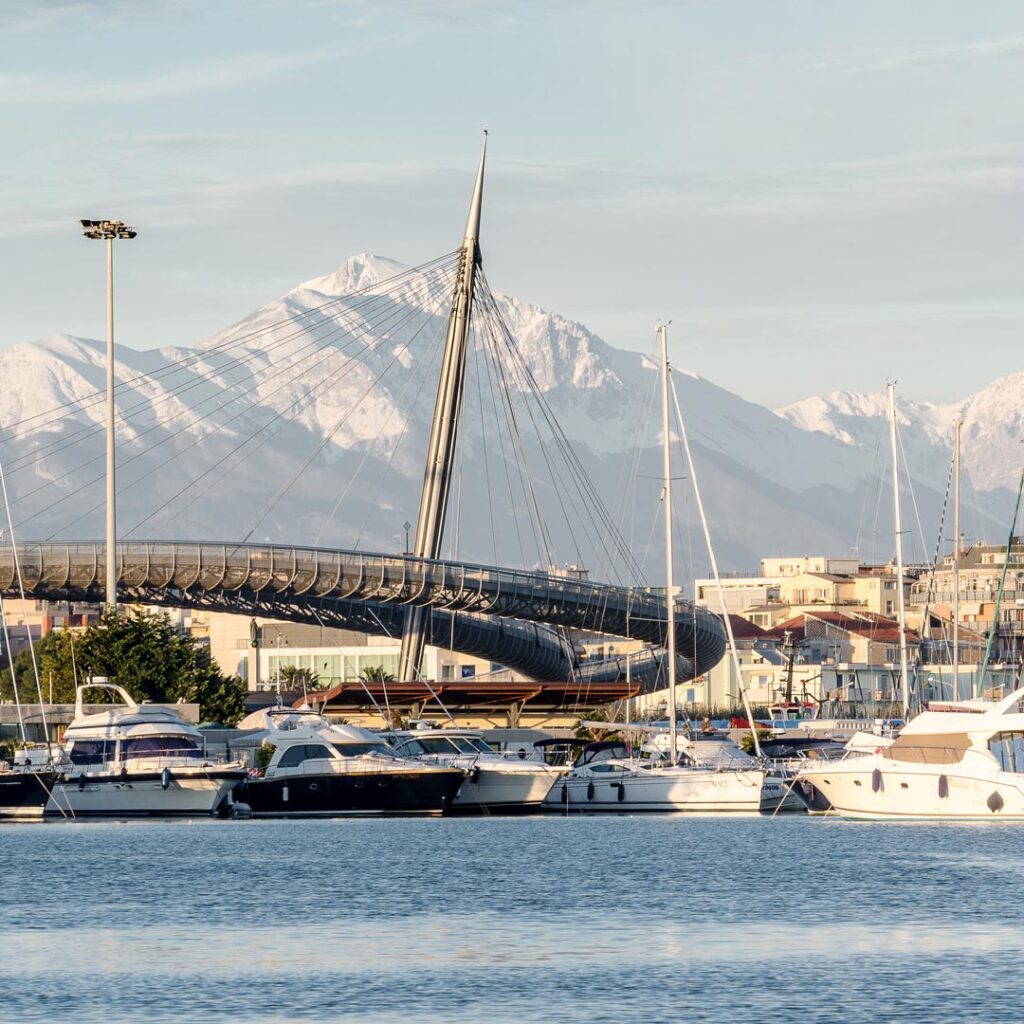
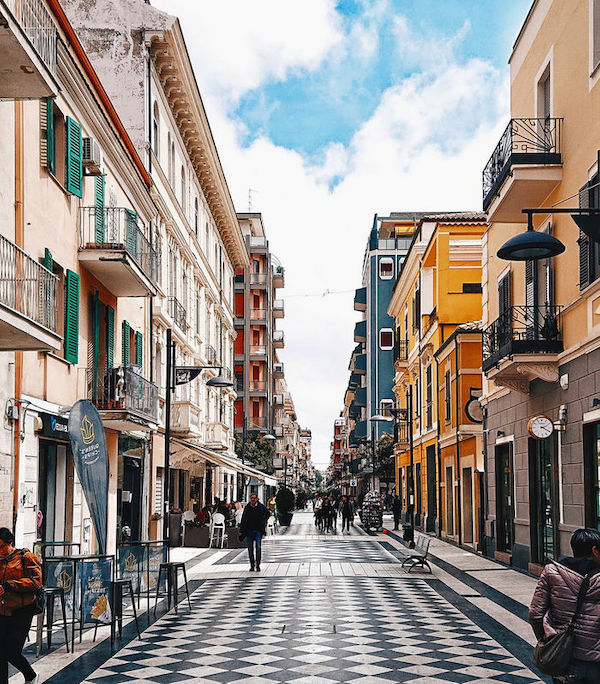
Pescara (Pescàrë) is a young, modern, lively city with many (places related to) nightlife venues. From the waterfront to the old town, reborn around the ancient Bourbon bath (this was the prison for political dissidents in the Risorgimento period), to the Muzii market, a covered market Bastioni street, the heart of the new nightlife in Pescara. Inside the market there is a small square, surrounded by stores and where events related to food and wine (as well as music and exhibitions) are organized. Pescara is the birthplace of the controversial and unreachable poet Gabriele D’Annunzio, who set many of his works here. More recently, the screenwriter and writer Ennio Flaiano was born in Pescara: he wrote the film "I Vitelloni" by Federico Fellini and was inspired by the figure of the unemployed Pescara bachelors, idle and always present at the tables of the most popular places in the city. Ponte del Mare (the Sea Bridge), the largest Italian cycle and pedestrian bridge and one of the largest in Europe, became part of the skyline in 2009. With its 466 meters in length, it joins the two sides of that homonymous river which until 1927 divided two towns: Pescara (south of the river, now called Portanuova area) and Castellammare Adriatico (north of the river). The bridge is now a favorite destination for walking and cycling for many people from Abruzzo. If you pass by it at sunset, you will admire the suggestive profile of the so called Sleeping Beauty, designed by the Gran Sasso mountain range.
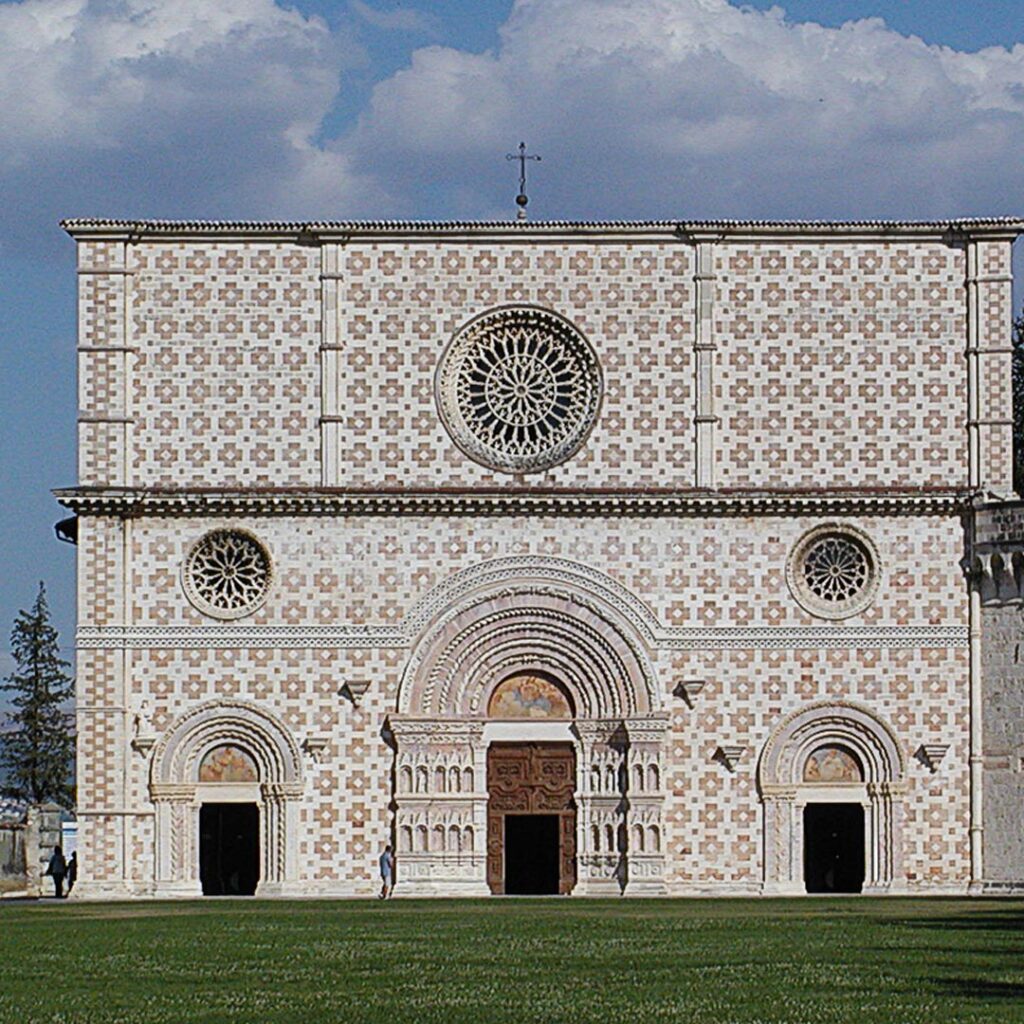
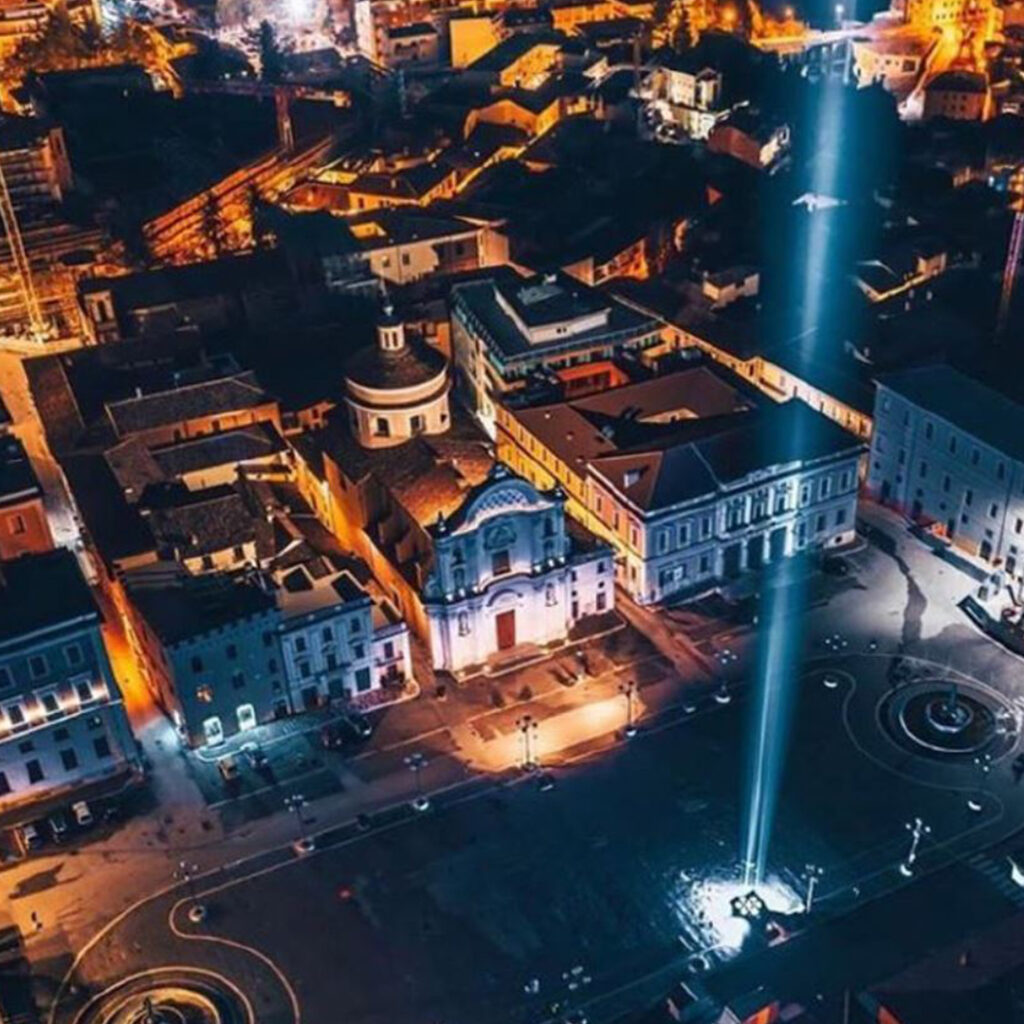
After the events related to the 2009 earthquake L'Aquila has the right to a place in the heart of all the people of Abruzzo. Years later with pride and great dignity, the city has returned to shine in its historic center and its narrow streets (the rue sctritte). To the wayfarer who immerses himself in this atmosphere, it manages to convey the same Abruzzo pride that allowed L'Aquila to overcome its most difficult moments. The Basilica of Santa Maria di Collemaggio is the symbol of the city and the highest expression of Abruzzo architecture; here is the location of an annual jubilee known as the Celestial Forgiveness (Perdonanza). A plenary indulgence is granted to the faithful during this sacred festival. Pietro da Morrone is buried inside the basilica; he became pope in 1294 with the name of Celestino V, one of the few popes who resigned from his mandate. A fascinating character, Pietro da Morrone lived as a hermit in the Majella mountains from a young age; here he returned, after renouncing his pontificate after only 4 months. He reverted to living in the simplest possible way in the most inaccessible places of the Mother Mountain, now known as Celestinian Hermitages. His life, however, marked by power games related to the succession, ended with a deportation, a captivity.
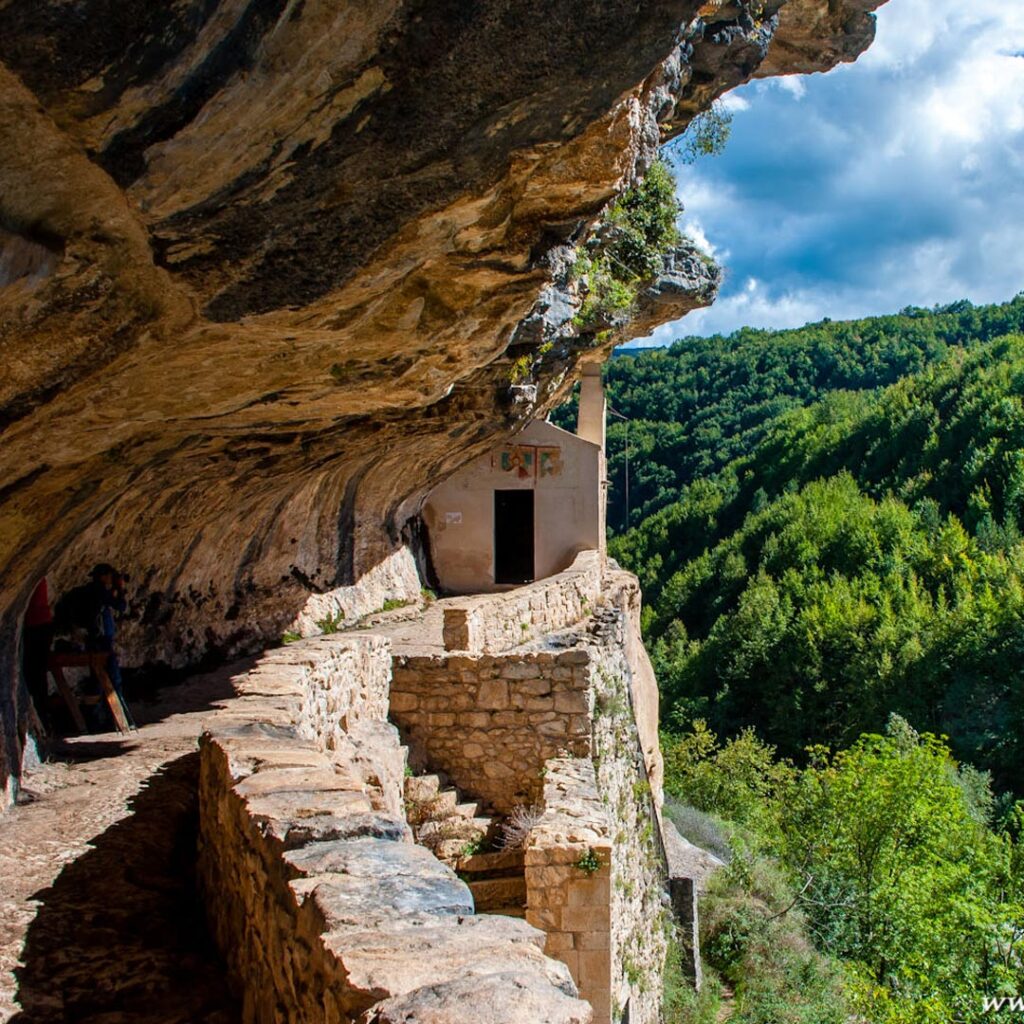
The Hermitage of San Bartolomeo in Legio is in the municipality of Roccamorice and is one of the most spectacular and famous Celestine hermitages in the Majella. Start from Valle Giumentina, and walk towards the hermitage: suddenly, you will find yourself in front of the valley of Santo Spirito. From here, among rocks of many different colors and various caves, you can see the hermitage, whose view accompanies the visitor up to the descent to the river. Once you arrive at your destination, it is customary to ring the bell: its sound will echo throughout the valley. This hermitage was built after 1250 by the hermit Pietro da Morrone on the ruins of a previously existing building. It consists of a small church: it is almost entirely excavated in the rock, its external walls being built in stone blocks and there are two small and spartan hermit cells, which used to be places of silence and prayer. You will be able to access the hermitage via four stairways: one of these served the function of Scala Santa. Here (the worshippers from neighboring towns flocked, attracted by the reputation of holiness enjoyed by Pietro da Morrone. In a niche on the altar there is a wooden statuette of San Bartolomeo, an icon known to devotees as “Lu Sandarelle“. A curiosity about the stoup: it collects water from a small source in the rock. Flowing out of the church, this water mixes with that of the spring under the hermitage. The Hermitage of San Bartolomeo in Legio is a place of particular charm and is nestled in a unique scenery like the one that the ancient Montagna Madre, the Majella, gives us.

